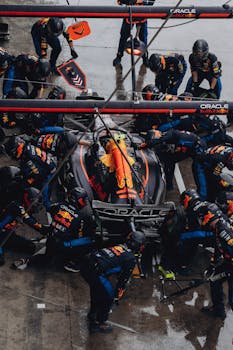+17162654855
+17162654855
NRP Publication News serves as an authoritative platform for delivering the latest industry updates, research insights, and significant developments across various sectors. Our news articles provide a comprehensive view of market trends, key findings, and groundbreaking initiatives, ensuring businesses and professionals stay ahead in a competitive landscape.
The News section on NRP Publication News highlights major industry events such as product launches, market expansions, mergers and acquisitions, financial reports, and strategic collaborations. This dedicated space allows businesses to gain valuable insights into evolving market dynamics, empowering them to make informed decisions.
At NRP Publication News, we cover a diverse range of industries, including Healthcare, Automotive, Utilities, Materials, Chemicals, Energy, Telecommunications, Technology, Financials, and Consumer Goods. Our mission is to ensure that professionals across these sectors have access to high-quality, data-driven news that shapes their industry’s future.
By featuring key industry updates and expert insights, NRP Publication News enhances brand visibility, credibility, and engagement for businesses worldwide. Whether it's the latest technological breakthrough or emerging market opportunities, our platform serves as a bridge between industry leaders, stakeholders, and decision-makers.
Stay informed with NRP Publication News – your trusted source for impactful industry news.
Energy

**
Formula 1 racing, a spectacle of speed, precision, and technological prowess, has undergone a dramatic transformation over its 75-year history. What began as a relatively rudimentary motorsport, fraught with danger, has evolved into a highly sophisticated arena showcasing the pinnacle of automotive engineering. This journey from bare-bones racers to the aerodynamic masterpieces we see today is a testament to innovation, safety advancements, and the relentless pursuit of performance. This article delves into the remarkable changes in F1 car design, focusing on key aspects like safety features, engine technology, and aerodynamic improvements.
The early days of Formula 1 were characterized by a stark lack of safety features. Think open-cockpit cars with minimal protection, flimsy chassis, and – perhaps most shockingly – no seatbelts in many instances! Drivers faced significant risks from high-speed crashes and fires. Aluminium fuel tanks, while lighter than their steel counterparts, were prone to catastrophic rupture in accidents, leading to devastating fires. These cars, often powered by relatively simple, naturally aspirated engines, were essentially glorified road cars with stripped-down interiors.
The 1970s marked a turning point in F1 safety. The increasing awareness of driver mortality spurred the introduction of crucial safety enhancements. Roll cages became mandatory, providing vital protection in rollovers. Improved fuel tanks, often incorporating better materials and safety cells, reduced the risk of fires. The introduction of ground effects aerodynamics revolutionized car design, significantly increasing downforce and cornering speeds. However, these advancements also came with their own set of challenges, often leading to new types of accidents. The use of turbocharged engines, while boosting power, introduced new complexities and reliability concerns.
The latter part of the 20th century and the beginning of the 21st saw an exponential leap in F1 technology and safety. Carbon fibre chassis, offering exceptional strength and lightness, became the norm. Advanced driver aids, including traction control and electronic stability control, enhanced safety and performance. Sophisticated aerodynamics, including complex wing designs and bodywork, maximized downforce while minimizing drag. The introduction of hybrid power units, combining internal combustion engines with electric motors, not only increased power but also improved fuel efficiency and reduced emissions. The Halo, a controversial but highly effective safety device, significantly reduces the risk of head injuries. This era also saw advancements in tire technology, brake systems, and suspension.
The future of Formula 1 is intrinsically linked to sustainability. While performance remains paramount, there's a growing emphasis on reducing the environmental impact of the sport. The shift towards sustainable fuels and the ongoing development of more efficient power units are key elements of this transition. Furthermore, the continuous refinement of aerodynamic designs and the exploration of new materials will continue to shape F1 car evolution. Artificial Intelligence and machine learning are playing increasingly significant roles in optimizing car performance and safety. Expect continued advancements in areas like driverless technology, although fully autonomous F1 cars remain a long-term prospect.
The journey of F1 cars from rudimentary, dangerous machines to the technologically advanced marvels of today is a testament to human ingenuity and the relentless pursuit of progress. While the risks remain, the advancements in safety have drastically reduced driver mortality. The evolution of F1 cars reflects not only the progress in automotive engineering but also the societal changes that have shaped the sport, emphasizing the crucial balance between performance, safety, and sustainability. The future of Formula 1 is promising, brimming with innovation and a commitment to a more sustainable future, while maintaining the thrill and excitement that have captivated audiences for 75 years.